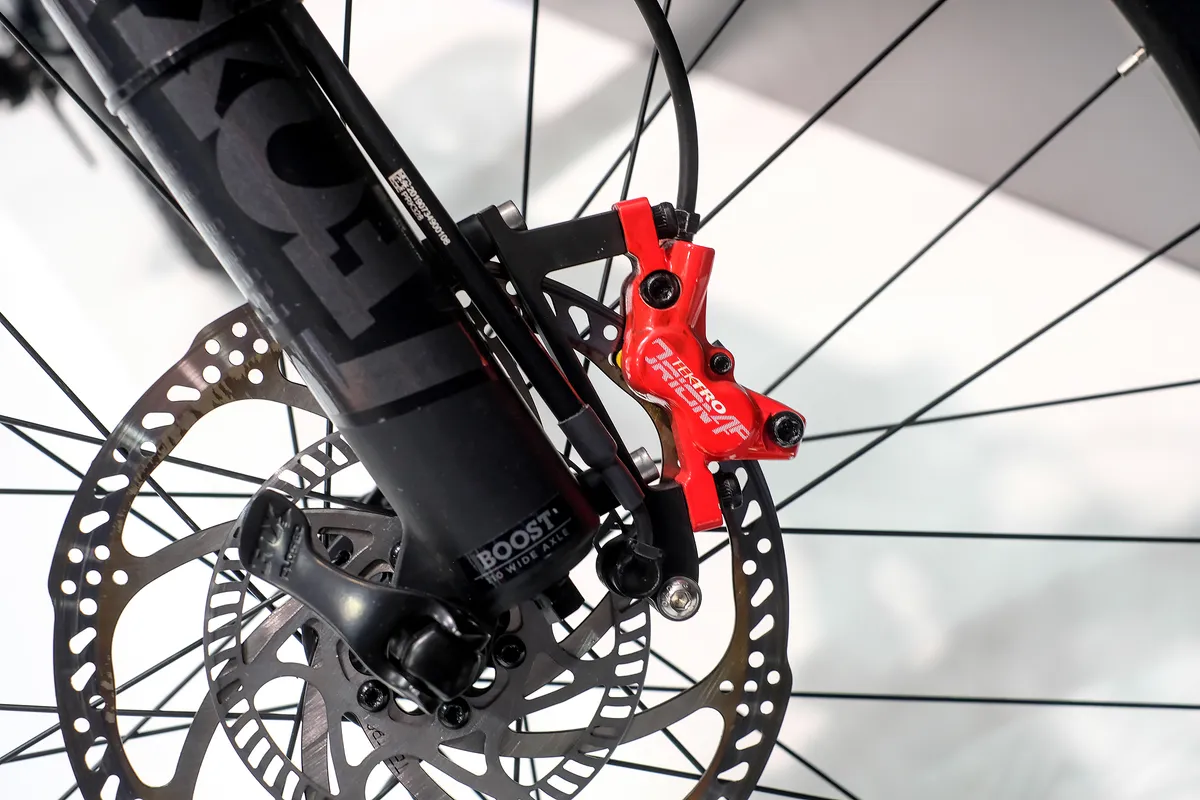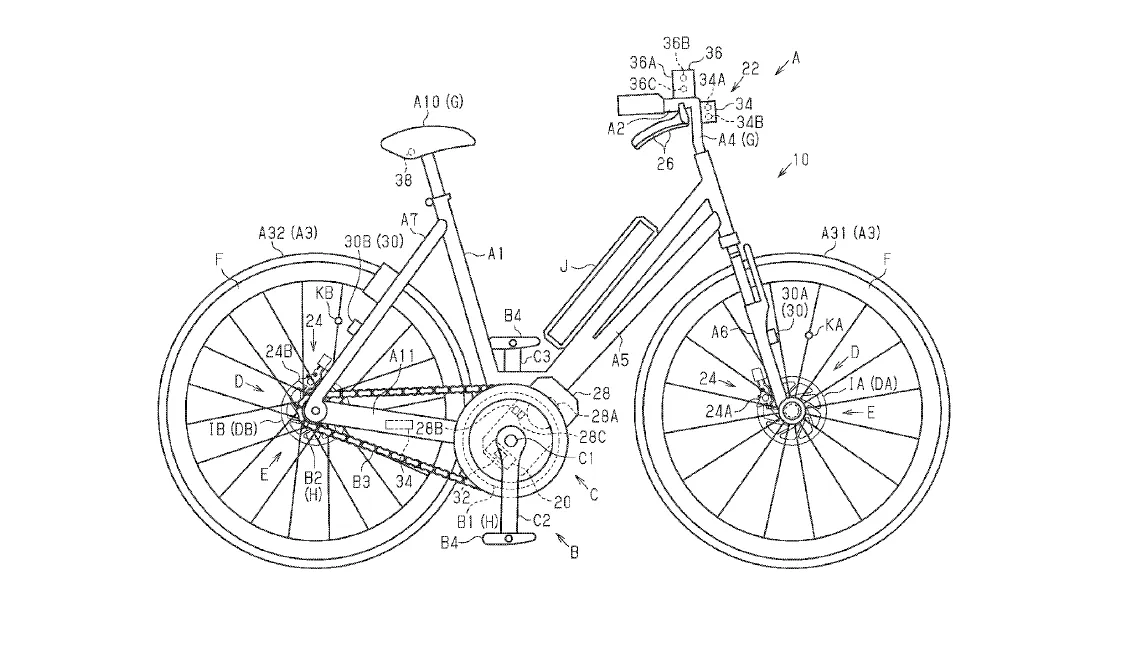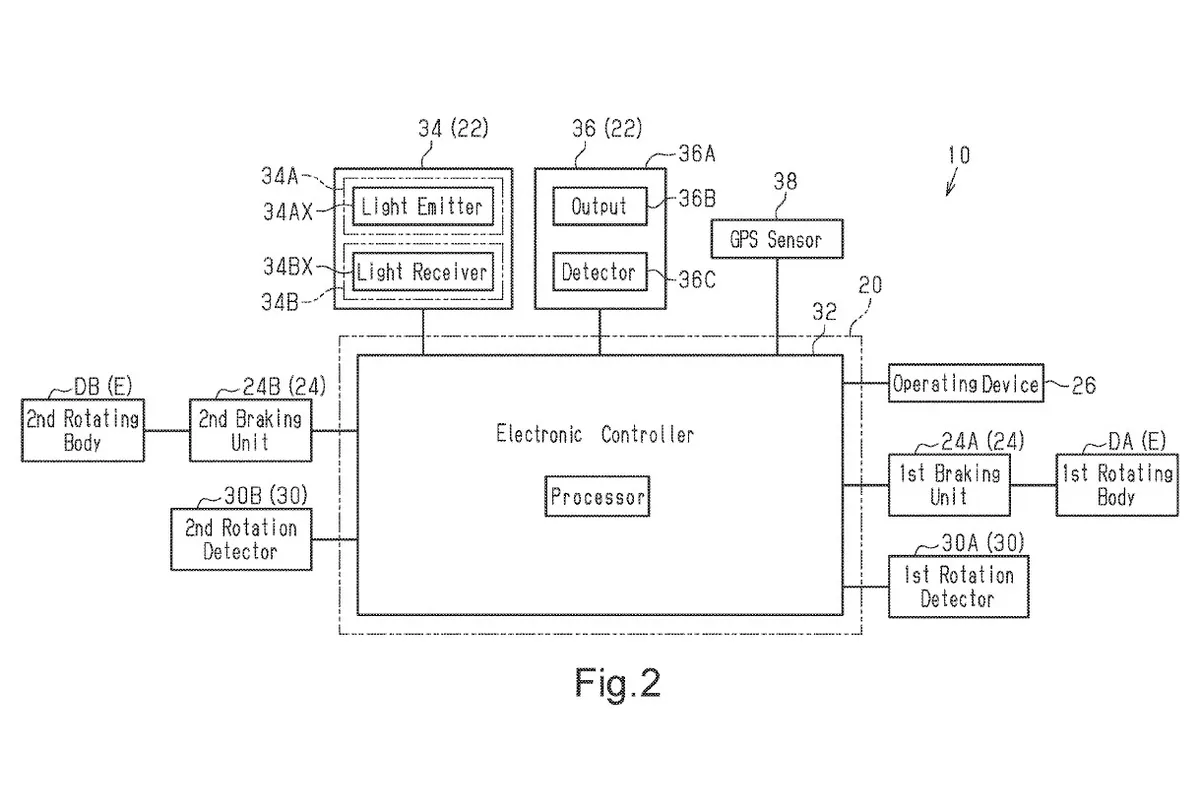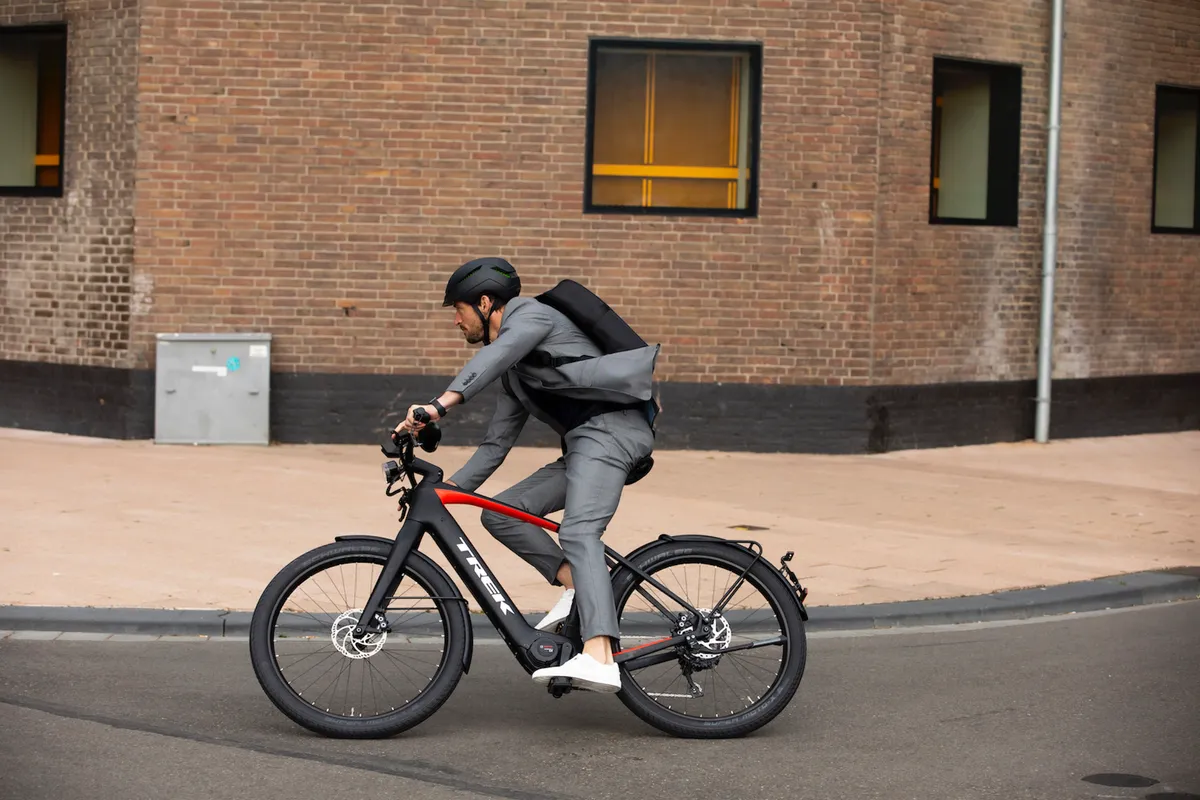Shimano has filed a patent for an ABS system (anti-lock braking) for bikes, suggesting that the brand might release its own version of the technology in the near future.
ABS for bikes has been around as a concept for some time and both Bosch and Blubrake have systems in production.
Existing tech has been designed for e-bikes and, judging by the diagrams in the patent, these are the focus of Shimano’s efforts too, although the text mentions bikes of all types, leaving the door open for further developments down the line.
Why would you want ABS on your bike?

ABS prevents inadvertent skidding under braking, reducing the chances of a crash when you need to stop in a hurry or take evasive action.
It’s well established tech in the automotive world and it’s almost universal among new motorcycles too.
ABS prevents skidding by continuously monitoring wheel speeds, intervening when there’s a speed discrepancy indicating that a wheel is sliding. Braking is modulated by varying the pressure in the hydraulic system by way of valves and/or a pump, with adjustments happening many times per second.
More sophisticated systems may add other data to the mix, including steering or lean angle, and other metrics relevant to keeping the bike right side up.
On two wheeled vehicles, keeping the rear wheel from lifting off the ground is a consideration, and some ABS systems include sensors to facilitate this.
An ideal ABS system would allow you to brake hard under any conditions, with the controller moderating braking force to prevent a loss of grip that could result in a crash.
Shimano ABS: not just for e-bikes?

ABS systems require a power source and this is one reason why they make more sense on e-bikes than conventional ones — there's already a conveniently placed battery to tap into.
Shimano’s patent leaves the door open for all types of bike, however, referring to “a vehicle that at least partially uses human force as a prime mover”, “vehicles that assist human force with electric power” and “a road bike, a mountain bike, or a cross bike”.
The patent discusses the measurement of wheel speed and cites a previous filing by Volkswagen/Audi from 2006, but appears to be an attempt to improve the effectiveness of the tech using alternative measuring techniques.

For effective skid prevention, the ABS system needs to know the bike’s actual speed relative to the ground, and the patent alludes to “information of a travelling environment” which it appears might be used to measure this.
There are mentions of “a light emitter that is configured to emit light to a travelling road surface” and a corresponding light receiver, LIDAR, which uses lasers to similar effect, and GPS too.

GPS is a curious one because I would have assumed that it couldn’t provide sufficiently accurate real-time speed data for ABS purposes, but perhaps I’m missing the point here.
It's conceivable that Shimano might be planning to use GPS data to help the system decide what sort of terrain the bike is on at a given moment, adjusting its behaviour accordingly. That might sound far-fetched, but it's essentially what Rolls-Royce did with the gearbox of its Wraith luxury coupé launched back in 2013.
Mo’ tech, mo’ integration, mobility
The idea of ABS for bikes is part of an ongoing industry trend towards everyday ‘mobility’ (I know, I know) rather than exclusively hobbyist-focussed products.
It’s possible that, as an enthusiast cyclist, the idea leaves you cold. You may think you don’t need ABS on your bike, just as you don’t need an e-bike or an automatic gearbox or any number of other innovations aimed at reducing the effort and knowledge required to ride a bike.

That doesn’t mean ABS isn’t a great idea for some riders, however.
While even the best systems are still subject to the laws of physics, it’s easy to see why casual cyclists, particularly more utility focussed ones and those less confident in their braking prowess, could benefit from ABS.
It could, in theory, completely eliminate the classic over-the-bars crash caused by grabbing a fistful of brake lever.
At the same time, performance minded riders aren’t likely to embrace ABS any time soon. An ABS system will inevitably add weight to a bike and in certain situations it can actually extend stopping distances.
It works well on grippy surfaces such as tarmac but a small amount of controlled skidding can help bring you to a halt on looser terrain such as gravel.
As such, ABS as we know it is certainly less well suited to mountain biking or gravel than the road.
Would you like ABS on your bike? Does it make sense for non e-bikes? As ever, let us know your thoughts in the comments.
